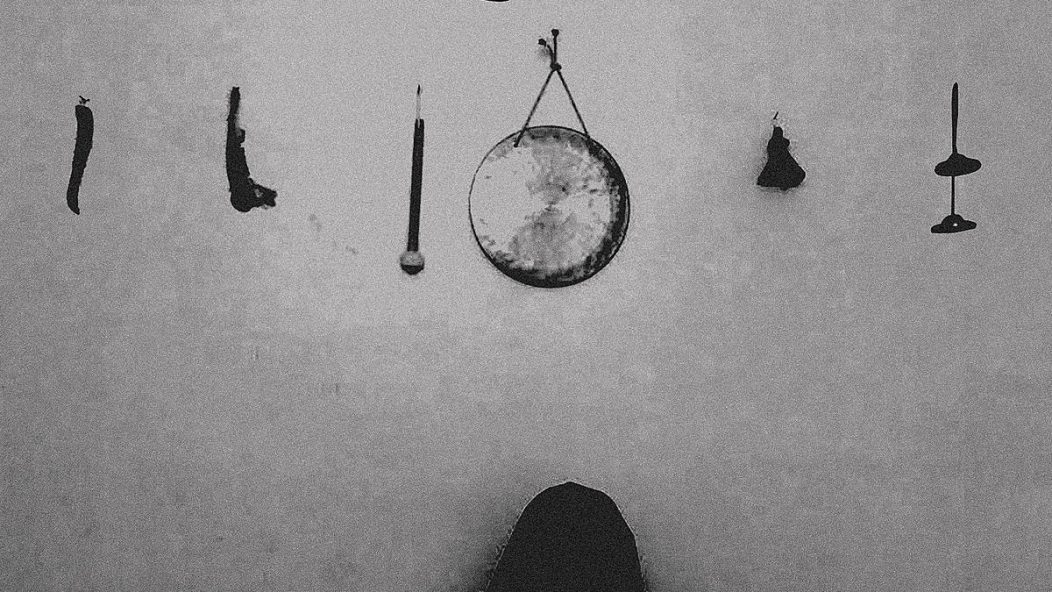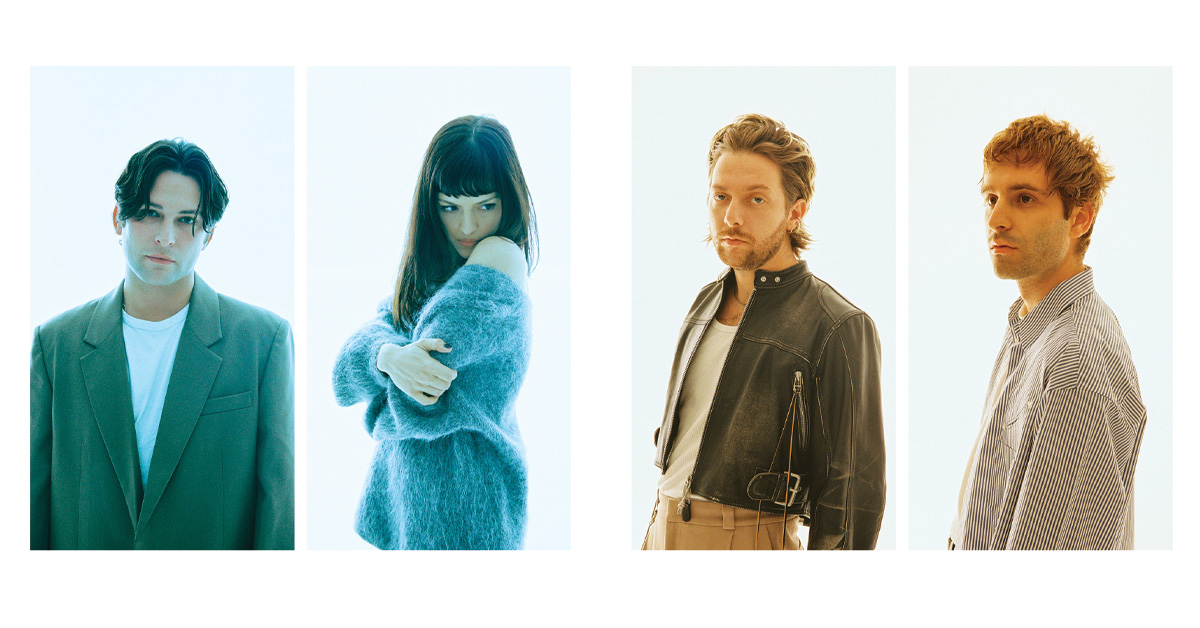
A Guide to Book of Sand’s Discograpy, Part II: That Old Black Magick
Book of Sand might remain forever weird to most, but this should not stop anyone from exploring what his pretty extensive discography has to offer. D’s work is organic, made of experimentations and paradigm shifts, but also fine tuning of patterns and approaches, and maturation of lifelong influences. It offers a lot when considered as a whole in all its variety and cohesiveness, but there are many different paths one can walk into it, many possible entries depending on your tastes.
As said in the first part, this guide aims to provide some keys for the curious listeners to get acquainted or re-visit the prolific and varied works of Book of Sand, with comments from none other than the artist himself. The first article covered the first canonical set of albums. Now let’s dive into the second, perhaps more mature arc of Book of Sand, shall we.
…
Occult Anarchist Propaganda (2016)
This one may well be the most famous album to date, and the most accessible for a metal audience. Yet nothing about it is especially “simple”. To me,Occult Anarchist Propaganda is the ultimate black metal album of the 2010s. It’s fierce and unforgiving, epic, powerful, strange, it’s avant-garde without any need to show-off.
But what makes it “ultimate” is that it’s the most galvanizing metal album I know. It is the fucking Horns of Jericho in black metal shape, music that can actually tear down the walls of white supremacy’s crumbling palaces.
There is a feeling of tiredness, but behind an unfathomable rage. The album infuses hate as any great black metal album should, but this is constructive hate: there’s a primal thing to it, a sense of haste. Haste for reckoning, haste for payoff. No patience, no mercy: the time for revolution is motherfucking NOW. For all these reasons and for the sheer sonic power of it, Occult Anarchist Propaganda is an almost exhausting listen for me. Every time.
I thought I should do a “traditional” riff-oriented black metal album, so I wrote a bunch of riffs and then recorded it. Writing the songs took about half a year, if I remember correctly. I got the idea for the bells from John Coltrane’s “Interstellar Space”. I was lucky that JW was willing to play drums on this; it wouldn’t have worked nearly as well without his contribution (the same is true of my other early albums and MF’s drumming). I recorded most of it in 2012 and then finished it in 2014.
I don’t think I did anything in particular when I was writing this one. I just tried to have good riffs without filler – no synth intros or outros, no breakdowns or acoustic segments, no samples, nothing longer than it needs to be…
Occult Anarchist Propaganda is the result of a straight-to-the-point approach by D then, but it would be a mistake to consider it as an orthodox black metal album. It works magnificently as a stand-alone because anyone will hear it and think “man, this has THE RIFFS.” But it has more to it than “just the riffs”, it is the result of incorporation and maturation of all facets of its creator’s cultural journey. All the weirdness and subtle things – microtones, violin, hints of Indonesian bells – make it “re-listenable” almost indefinitely despite its heavy toll.
Now let us take a short break and take a hop back in time, shall we.
…
…
Before Book of Sand: Light
Prior to the creation of Book of Sand, D released three albums with his Doom band Light (available through Crucial Blast). I say “Doom” for brevity’s sake but at first, I thought of Light as one of the most scorched and scary things I have ever heard : bleak, undecipherable droning layers of noisy guitars and distant screams, noise and pain.
But discussing it with D completely flipped my understanding of this sound over.
My friend EI and I did that band in 2008-2009; I’m planning to revisit the style with the album I’m working on now. To me the sound was like sitting with a blanket and watching the snow in the evening…
It’s interesting; people often interpreted that sound as scary and painful, but to me it was a very comfortable feeling – distant, but warm and poignant. I felt very lucky at the time to have stumbled across that sound. I had been listening to a lot of Earth and Corrupted, and that band was in part my take on those aesthetics. The other major part was the feeling of the rural midwestern US, which can be very stark and strange.
Light is a meditative journey, and shows how deep and cohesive the whole artistic journey of D is. How his discography has even more worth when being considered as a whole.
…
…
Sun Going Down (2018)
I particularly enjoy this one. Book of Sand goes all the way down to the roots here; this is plain, slow, occult blues.
Like many of his albums, it’s a bit unsettling, but also weirdly comforting. There’s a warmth to many moments, like “I’ll be reborn a thousand times.” There are very few layers in the arrangements compared to other releases : merely D.’s spellbinding, low singing and slow Americana guitar play and sparse drumming. Sun Going Down feels like a (mostly) acoustic take on Earth’s Hex, with hints of hallucinated Southern Gothic – especially on the haunting last track “Sitting in the Moonlight”.
Most of my recordings have been very dense and layered, and so I thought I should try doing the opposite. I do quite like country blues, old time banjo music, and so on, although mostly just recordings from the 1920s. I was trying to have a blues/Americana feel for the most part, obviously.
In retrospect, this album also owes a lot to mid-2000s Earth and Great American Desert.
This album allows some of the deep cultural roots of D’s artistic path to shine through the minimalistic arrangements. Sun Going Down owes to Earth both musically and spiritually, as an expression of the unending continuity of music, feelings and people. Every sparse beat, as heavy as heaven falling down, every single fingerpick casts a spell, summoning the likes of Son House and Johnny Shines.
This record is ancient magick.
…
…
Postmodern Witchcraft (2018)
If all other releases from Book of Sand feel a bit too “unwelcoming,” this one might change the deal for you. It does not give up on weirdness, but introduces the artists’ themes and abilities through a fresh, unexpected prism: surf goth rock.
It is simply awesome. The surf rock beat and garage vibes instantly kick in, to lure the listener into D.’s goth singing and gloomy synths. Although this garage goth take is certainly a nice surprise, it is by no means a simple gimmick ; the whole EP is coherent through and through even when black metal rises again from the shadows of the record (the magnificent “Termites in the Trunk”), or when more aggressive synths and beats rise up in the last track, the bitter Blood and Soil. This EP goes from surf goth rock to cabaret rock, to blackened post-punk, to western bottleneck riffs, to folk blues, to electronic breakbeat-y cold wave, and in the darkness binds them all. To put it lightly, Postmodern Witchcraft defeated Rope Sect before Rope Sect even existed.
I don’t know Rope Sect, so I guess I can’t comment on that [laughs]
I’m pretty obsessed with 1960s garage rock and its shadow – the melodic writing was so good, the raw sound is great. At times it anticipated black metal (see those surf black metal covers and The Savages – “The World ain’t Round, it’s Square”). I had hints of this in earlier albums (Track 6 on HBTWF) for example, and I expect I’ll be revisiting this in the future as well. LF (who records his own music as Bilbong Baggins) was very much the right drummer for this one too.
I greatly appreciate the succinct approach to songwriting in garage pop (Dead Moon being the best modern example of this).
…
…
Seven Candles for an Empty Altar (2022)
This is the latest album by Book of Sand at the time of writing, and part of why I wanted to do this discography round trip.
By the words of D himself, Seven Candles for an Empty Altar is a brand new start for Book of Sand, musically and thematically speaking:
When I started releasing these albums I had a whole structure planned for the band’s run (maybe this was inspired by Wrnlrd, I can’t remember); I was planning to do sets of albums, with connections within and across the sets. Those first 13 releases fit into that. When I finished Seven Candles For An Empty Altar it seemed to me that it would be better to abandon this plan and start again.
To some extent the first set of albums are all experimental and the new ones aren’t: I was trying some specific idea on each of the early albums, but with the new ones I’m just making albums with whatever ideas and approaches seem best to me.
With or without context, Seven Candles for an Empty Altar will undoubtedly surprise you, and blow you away. There’s mind-twisting jazz, humongous black metal riffs, genuinely unsettling screeches and howls, monumental contrasts, and generally weird stuff. But if by any chance you familiarized yourself with some of the earlier works, this album will make a lot of sense to you. It might even feel comforting.
…
…
Seven Candles for an Empty Altar is out on November 1st and can be ordered via either Fiadh Productions (for North American folks) or Vita Detestabilis Records (for European peeps).
A Book of Sand compendium box set will be avialable via Fiadh Productions next year.
–Alexandre Mougel










